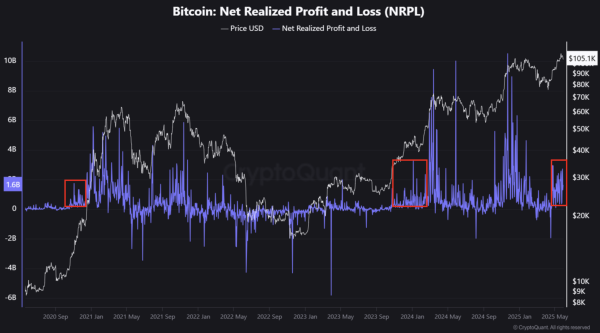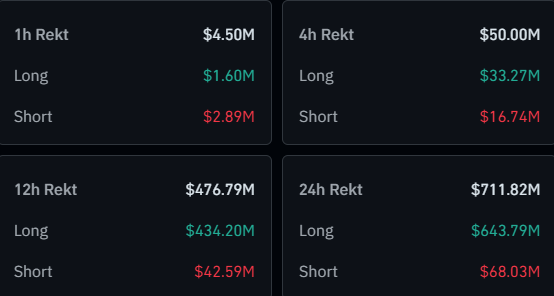Synopsis
The Bitcoin whitepaper, released by Satoshi Nakamoto in 2008, aimed to create a decentralized transaction system. Bitcoin evolved from an experimental digital currency to a significant financial asset, sparking regulatory attention and innovative cryptocurrency developments. Nowadays, Bitcoin influences global finance, regulatory frameworks, and even political agendas.
In 2008, Satoshi Nakamoto released the Bitcoin whitepaper with the aim of creating a system that replaces the need for central authorities like banks and financial institutions to facilitate transactions. The nine-page document called “Bitcoin: A Peer-to-Peer Electronic Cash System” contained a detailed description of how payments can be made directly to one another based on cryptographic proof and not relying on any third-party intermediaries.
Since then, Bitcoin grew from $0.05816 in 2010 to $72,500 today making it one of the largest asset classes in the world. As we celebrate the 16th anniversary of the Bitcoin Whitepaper, let’s take a look at how Bitcoin evolved over the years and shaped the crypto market to what it is today.
The Evolution of Bitcoin
When Bitcoin first launched, At the time, Bitcoin had virtually no value, and early adopters traded it more as an experiment than an investment. This changed in May 2010, when Laszlo Hanyecz, a programmer from Florida, famously paid 10,000 BTC for two pizzas. This transaction became a milestone as it marked the first recorded real-world purchase using Bitcoin, establishing it as a medium of exchange beyond digital communities. Today, those Pizzas are valued at over $7.2 million, and this event is commemorated as “Bitcoin Pizza Day.”
Crypto Tracker![]() TOP COIN SETSBTC 50 :: ETH 506.01% BuyCrypto Blue Chip – 54.69% BuySmart Contract Tracker2.23% BuyWeb3 Tracker-1.25% BuyNFT & Metaverse Tracker-5.84% BuyTOP COINS (₹) Ethereum222,657 (0.23%)BuyBitcoin6,077,217 (0.03%)BuyTether84 (0.02%)BuyBNB49,735 (-1.84%)BuySolana14,699 (-3.04%)Buy
TOP COIN SETSBTC 50 :: ETH 506.01% BuyCrypto Blue Chip – 54.69% BuySmart Contract Tracker2.23% BuyWeb3 Tracker-1.25% BuyNFT & Metaverse Tracker-5.84% BuyTOP COINS (₹) Ethereum222,657 (0.23%)BuyBitcoin6,077,217 (0.03%)BuyTether84 (0.02%)BuyBNB49,735 (-1.84%)BuySolana14,699 (-3.04%)Buy
By 2013, Bitcoin had gained significant traction, and its price surged dramatically, crossing $1,000 for the first time. This sharp price increase captured the attention of mainstream media and sparked public curiosity. It also became big enough to draw the attention of regulatory authorities to provide better regulations and scrutiny.
Did you Know?
The world of cryptocurrencies is very dynamic. Prices can go up or down in a matter of seconds. Thus, having reliable answers to such questions is crucial for investors.
View Details »![]()
Decentralization and Digital Scarcity
Due to its decentralised nature, all transactions are recorded on a public ledger, the blockchain, which anyone can access and verify, ensuring data integrity without central authority control. With a capped supply of 21 million, Bitcoin introduces digital scarcity, positioning itself as a hedge against inflation, unlike other fiat currencies.
The release of the Bitcoin Whitepaper laid the foundation for the development of 1000s of other tokens such as Litecoin, Ripple and Solana, each bringing unique features and expanding on Nakamoto’s ideas. Ethereum, for instance, introduced smart contracts, allowing for programmable, self-executing agreements that eliminate the need for intermediaries in transactions. Apart from crypto, Bitcoin also gave rise to the concept of DiFi (decentralised finance) increasing efficiency, lowering costs, and improving security and ownership among users. These innovations, building on BTC’s foundation, have broadened the scope of blockchain technology, cementing Bitcoin’s role in reshaping finance and driving the digital economy forward.
Bitcoin Today and the Road Ahead
After years of evolution, Bitcoin has grown to the extent that the SEC has approved Bitcoin ETFs, allowing institutions and retail investors to gain seamless exposure to crypto. More importantly, Bitcoin has become a hot topic in the U.S. presidential elections, with both Republican and Democratic parties planning to foster growth and establish clear regulations around the crypto ecosystem. Countries like El Salvador have already adopted Bitcoin as a legal tender due to its inflation-hedging potential. The UAE and the European Union have developed regulatory frameworks, such as the MiCA regulations, to capitalize on the growth of crypto.
As we move towards a more globalized economy, the need for consistent regulatory frameworks around crypto is more pressing than ever. The rise of digital assets, led by Bitcoin, has highlighted the potential benefits and challenges associated with their adoption in various economies.
(The author is CEO and Co-founder of Mudrex, a global crypto investment platform)
(Disclaimer: Recommendations, suggestions, views and opinions given by the experts are their own. These do not represent the views of the Economic Times)
Source




























